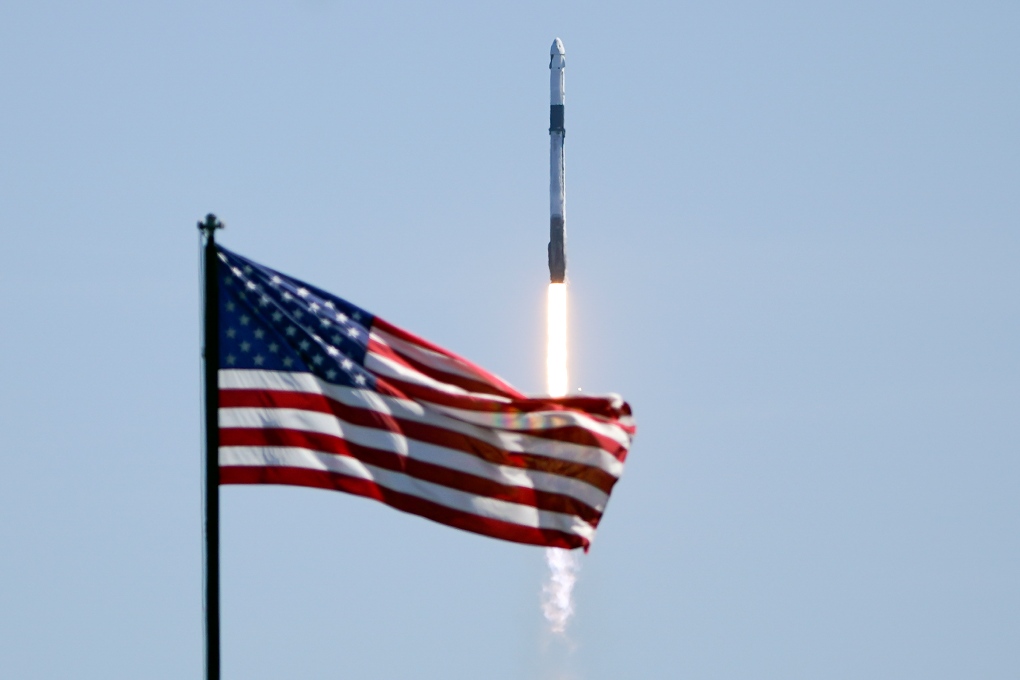
BREAKING Police investigating shooting outside of Drake's Bridle Path mansion: source
Toronto police are investigating a shooting that took place outside of Drake’s Bridle Path mansion early Tuesday morning, a source tells CP24.
Over Hawaii, a decaying SpaceX rocket stage created a unique "night spiral."
The Subaru Telescope recorded video of the "flying whirlpool" over Mauna Kea on Sunday, hours after a California-based Falcon 9 rocket successfully launched a spy satellite for the U.S. National Reconnaissance Office into orbit, according to SpaceWeather.com.
The spacecraft's activities and cargo are classified.
The footage was originally captured by the Subaru-Asahi Sky Camera, which is a collaboration project between Subaru and the Asahi-Shimbun, a major Japanese newspaper.
According to SpaceX footage, the first stage of the Falcon 9 booster is reusable, and it landed successfully on a drone ship in the Pacific Ocean.
The top stage of the Falcon 9 is not reusable, and after delivering the spacecraft to its allotted orbit, it burned up naturally in the atmosphere.
According to CNN, the number of active satellites has multiplied from about 1,000 in 2017 to more than 5,000 today.
In December 2021, a report in The Astronomical Journal predicted that one out of every 15 spots of light in the night sky will be a moving satellite in less than a decade - painting a dire picture about the future of satellite pollution.
SpaceX is responsible for almost a third of all operational satellites in orbit, more than any other corporation or country, including the U.S. government.
SpaceX has already launched more than 2,000 satellites and plans to launch at least 42,000 more as part of its Starlink mega-constellation. Amazon's Project Kuiper and London-based OneWeb are two more distant contenders.

Toronto police are investigating a shooting that took place outside of Drake’s Bridle Path mansion early Tuesday morning, a source tells CP24.
Sporting mullets, Canadian Armed Forces officer cadets placed second in an annual military skills competition in the U.S.
An Ontario man says he paid more than $7,700 for a luxury villa he found on a popular travel website -- but the listing was fake.
Movement is movement, right? Not exactly. Here’s what your body is looking for in addition to your morning walk or yoga session, according to experts.
The Met Gala and its fashionista A-listers on Monday included Jennifer Lopez, Zendaya and a parade of others in a swirl of flora and fauna looks on a green-tinged carpet lined by live foliage.
Quebec is looking at tightening the regulations around sperm donation in the province following the release of a documentary that revealed three men from the same family fathered hundreds of children.
The rumours are true: Vegetables aren't real — that is, in botany, anyway. While the term fruit is recognized botanically as anything that contains a seed or seeds, vegetable is actually a broad umbrella term.
Noelia Voigt, who was crowned Miss USA in November 2023, has announced she is resigning from her role, saying the decision is in the best interest of her mental health.
Sure, she was a royal princess and all. But there’s no way Sleeping Beauty — either before or after her nap — ever had quite the fabulous wardrobe that’s been assembled at the Metropolitan Museum of Art.

Whether passionate about Poirot or hungry for Holmes, Winnipeg mystery obsessives have had a local haunt for over 30 years in which to search out their latest page-turners.
Eighty-two-year-old Susan Neufeldt and 90-year-old Ulrich Richter are no spring chickens, but their love blossomed over the weekend with their wedding at Pine View Manor just outside of Rosthern.
Alberta Ballet's double-bill production of 'Der Wolf' and 'The Rite of Spring' marks not only its final show of the season, but the last production for twin sisters Alexandra and Jennifer Gibson.
A mother goose and her goslings caused a bit of a traffic jam on a busy stretch of the Trans-Canada Highway near Vancouver Saturday.
A British Columbia mayor has been censured by city council – stripping him of his travel and lobbying budgets and removing him from city committees – for allegedly distributing a book that questions the history of Indigenous residential schools in Canada.
Three men in Quebec from the same family have fathered more than 600 children.
A group of SaskPower workers recently received special recognition at the legislature – for their efforts in repairing one of Saskatchewan's largest power plants after it was knocked offline for months following a serious flood last summer.
A police officer on Montreal's South Shore anonymously donated a kidney that wound up drastically changing the life of a schoolteacher living on dialysis.
Since 1932, Montreal's Henri Henri has been filled to the brim with every possible kind of hat, from newsboy caps to feathered fedoras.
 A SpaceX Falcon 9 rocket lifts off from pad 39A at the Kennedy Space Center in Cape Canaveral, Fla., Friday, April 8, 2022. (AP Photo/John Raoux)
A SpaceX Falcon 9 rocket lifts off from pad 39A at the Kennedy Space Center in Cape Canaveral, Fla., Friday, April 8, 2022. (AP Photo/John Raoux)